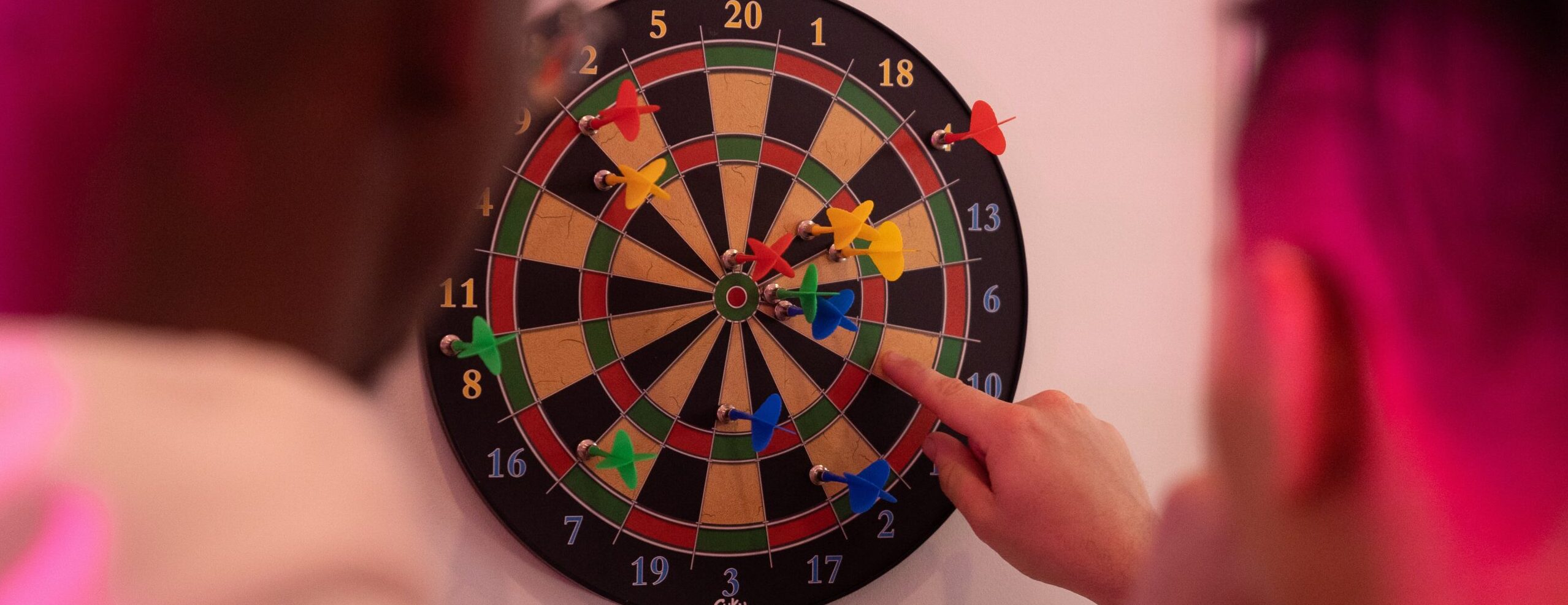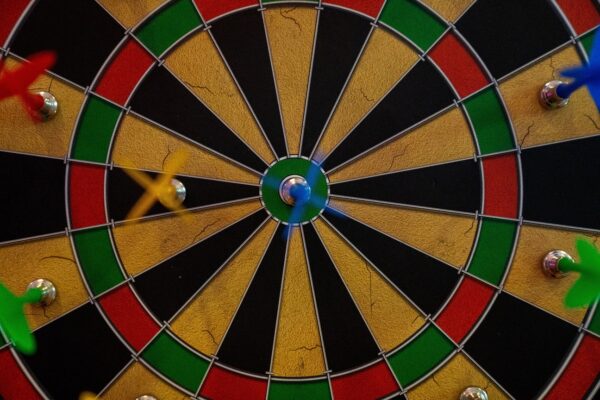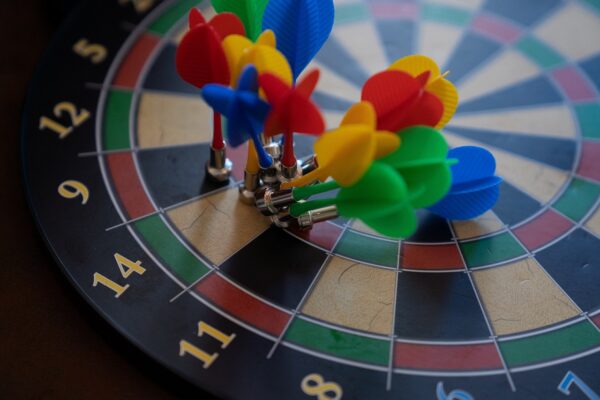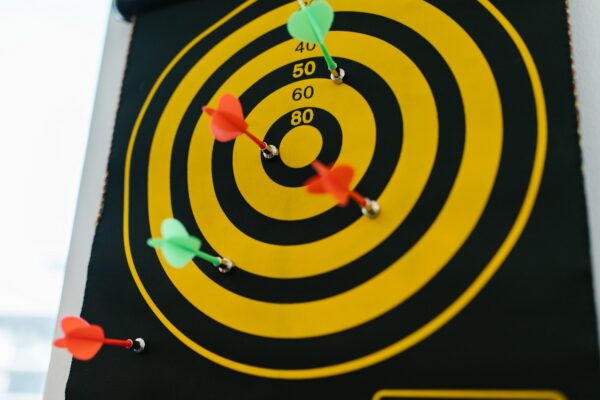Darts is a popular indoor game that requires skill, accuracy, and precision. One of the essential factors that determine the success of a throw is the weight of the dart. The weight of the dart can significantly affect the throw’s trajectory, speed, and accuracy. In this article, we will explore how the weight of a dart affects the throw and offer some tips to help you choose the right weight for your style of play.
Firstly, it is essential to understand the anatomy of a dart. A standard dart consists of three main components: the barrel, the shaft, and the flight. The barrel is the heaviest part of the dart, and it is the part that the player grips when throwing. The shaft is the middle section that connects the barrel to the flight, which is the lightweight, plastic or feathered piece that creates lift and stability.
Darts come in different weights, ranging from 12 grams to 50 grams. The most common weight range is between 18 and 26 grams. The weight of a dart affects its momentum, which is the product of its mass and velocity. A heavier dart has more momentum, which means it requires more force to throw but will travel faster and hit the board with more force. On the other hand, a lighter dart has less momentum, requires less force to throw, but will travel slower and hit the board with less force.
When throwing a dart, the weight of the dart can affect the trajectory of the dart. A heavier dart will tend to fly in a flatter trajectory because it has more momentum and can break through the air resistance more efficiently. A lighter dart, on the other hand, will tend to fly in a higher arc because it has less momentum and can’t break through the air resistance as effectively. Therefore, if you are looking to throw straight and flat, a heavier dart may be a better choice.
The weight of a dart can also affect the speed of the throw. A heavier dart requires more force to throw, so it will travel faster than a lighter dart. This can be an advantage if you want to hit the board with more force, but it can also be a disadvantage if you are struggling to control the speed of your throws. A lighter dart will travel slower, which can be an advantage if you are looking for more control over your throws.
Another factor to consider when choosing the weight of your dart is your throwing style. Different throwing styles require different weights of darts. For example, if you have a fast and powerful throwing style, you may prefer a heavier dart because it will match the force of your throw. If you have a slower and more controlled throwing style, a lighter dart may be a better choice because it will match the speed and accuracy of your throw.
The weight of your dart can also affect the accuracy of your throw. A heavier dart may be more accurate because it will have less wobble during flight due to its higher momentum. However, a lighter dart can also be accurate if it is thrown correctly and has enough spin to stabilize its flight.
It is essential to choose the right weight of dart for your style of play. If you are just starting with darts, it is recommended that you try a few different weights to see which one feels comfortable for you. It’s important to remember that the weight of the dart is not the only factor that affects the throw’s success. Other factors such as the grip, stance, and release technique can also affect the throw’s accuracy and trajectory.
The weight of a dart is an essential factor that can significantly affect the trajectory, speed, and accuracy of the throw. A heavier dart will require more force to throw, travel faster, and hit the board with more force. A lighter dart will require less force to throw, travel slower, and hit the board with less force. Choosing the right weight of dart depends on your throwing style and personal preferences.
If you are new to darts, it’s a good idea to start with a mid-weight dart between 20 and 24 grams. This weight range is suitable for most players, and it allows you to experiment with different weights to find what works best for you. You can also try using a dart with a removable weight system that allows you to adjust the weight of the dart by adding or removing small weights.
If you have a fast and powerful throwing style, a heavier dart may be more suitable for you. A dart weighing between 25 and 30 grams will match the force of your throw and travel faster, making it easier to hit the board with more force. However, if you have a slower and more controlled throwing style, a lighter dart weighing between 16 and 20 grams may be more suitable for you. A lighter dart will match the speed and accuracy of your throw, making it easier to control the flight of the dart.
It’s important to note that the weight of the dart is just one factor that affects the throw’s success. Other factors such as grip, stance, and release technique can also significantly impact the accuracy and trajectory of the dart. For example, a poor grip can cause the dart to wobble during flight, while an incorrect stance can affect the trajectory of the throw. Therefore, it’s essential to practice your technique and experiment with different weights to find what works best for you.
In summary, the weight of a dart is a critical factor that can significantly affect the success of a throw. A heavier dart will travel faster and hit the board with more force, while a lighter dart will travel slower and hit the board with less force. Choosing the right weight of dart depends on your throwing style and personal preferences. It’s essential to practice your technique and experiment with different weights to find what works best for you. With practice and patience, you can improve your accuracy and precision and become a skilled darts player.



